With the onset of discomfort in the spine, almost every person is upright.Using painkillers, the greater part of the population does not even ask why the back hurts, attributing negative manifestations to the common cold, drafts or the effects of stretching.Meanwhile, painful syndrome (BS) can be an alarming signal for serious pathologies.
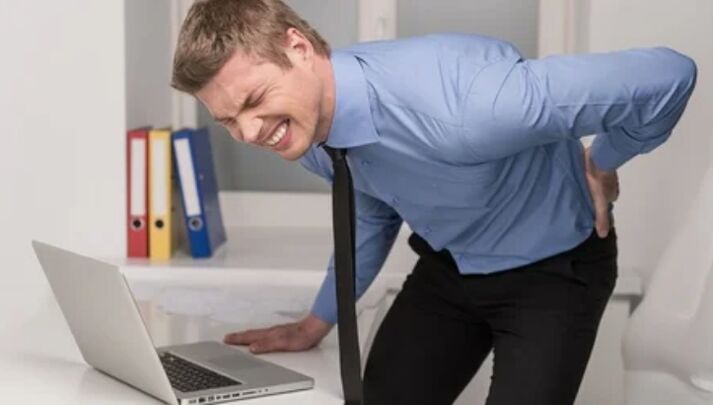
In different parts
Back pain is different.
Among them are distinguished:
- Struggle.Differ in frequency.
- It grows.In the process of pathological conditions, there is an increase in the degree of intensity of uncomfortable manifestations.
- Kama.Are a consequence of emergency conditions.
- In the form of fires.They are recorded in the case of impaired spinal functionality.
- Permanent or monotonous.
In addition, back pain can be of two types:
- Designed.It spreads through nerve fibers.It can emit to distal parts of the body.
- Reflected.It occurs during malfunctions in the work of the internal organs.
Right
There are a number of circumstances that explain why the back hurts on the right.They are:
- The result of hypodynamia, which causes the abdominal muscles to lose their elasticity and elasticity until all the load is laid on the spine;
- Soft tissue injuries and bruises;
- Performing physical work in an unnatural position (with uneven loading).
In addition to the natural factors, the cause of the uncomfortable sensations from the back may be diseases of the internal organs and the musculoskeletal system.
This symptom may be part of the clinical picture of the following diseases:
- Diseases of the respiratory system.With inflammation of the lungs (right pneumonia), in addition to back pain, the patient complains about the onset of dry cough, general weakness, increase in body temperature indicator.
- Observation BS on the right is observed with pleurisy.It is accompanied by the ejection of purulent phlegm and the difficulty of breathing.
- Pathology of the liver and gall bladder.BS is distinguished by the duration of current.To stop, painkillers or antispasmodic drugs are used.The clinical picture is supplemented by signs of intoxication (nausea, vomiting, violation of the law of defecation).
- Gastrointestinal diseases.With pancreatitis or gastritis, pain syndrome is usually located on the left side, but is often radiated to the right.
- UrinaryThey are manifested by prolonged or stupid pain.It occurs against the background of frequent urination, with the appearance of red blood cells (blood) in the urine.A distinctive feature is that a sick person cannot find a comfortable position on the body to reduce back pain.
- Appendicitis.In addition to the unpleasant sensations in the abdomen, the patient notes that the back hurts on the right.Additional symptoms are the onset of nausea and vomiting reflex, increase the body temperature indicator, general collapse.
- Gynecological pathologies.The discomfort to the right are recorded in the case of ectopic pregnancy, inflammation of the appendages or due to the growth of cystic ovarian seals.
- Osteochondrosis.The soreness can be located both on the right and on the left.It is accompanied by stiffness in movement and increases with physical work (especially if one performs it for the first time).In advanced forms there is an irradiation in the fingers with their tingling.
Left
Localization of back pain on the left can be the main or additional symptom in the clinical picture of many diseases.
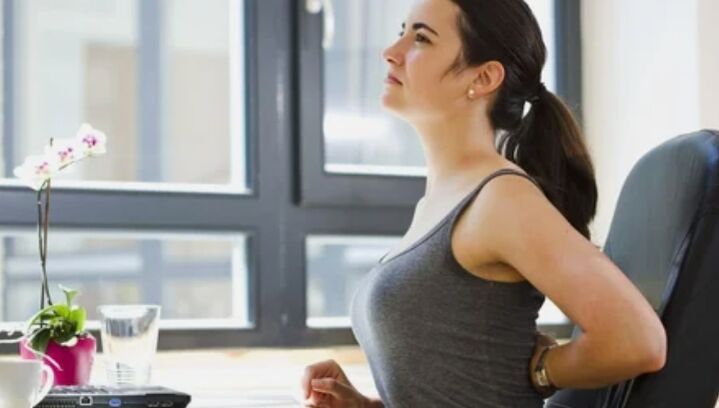
This may occur in the following cases:
- Spinal disease.Most often, the patient complains that the back hurts due to osteochondrosis, intercostal neuralgia, or when pinching the nerve.The clinical picture is complemented by stiffness in movement, radiation in the upper limb, loss of sensitivity in the fingers.
- Diseases of the stomach and intestines.The symptoms of pain are supplemented by the presence of nausea, vomiting, stool disorder and increased gas formation.These signs appear with the development of pancreatitis, intestinal colic, cholecystitis.
- Cardiological diseases.Acute painful syndrome at the back under the ribs in combination with shortness of breath and burning sensation behind the sternum is a characteristic sign of myocardial infarction.
- In Bronchi and the lungs, BS can be observed with the development of pneumothorax, pleurisy, bronchitis or pneumonia.It can be strengthened by inhalation and reduced by exhalation.
In the area of the lower back
The lumbar region starts from where the ribs end, and ends with coccyge.Most often, patients seeking medical attention in the case of back pain complaints suggest the lower back.
The causes of lumbar pain are the following conditions:
- 90% of all cases of lumbar pain are explained by impaired spinal functionality (osteochondrosis, hernia between the vertebrae, scoliosis, radiculitis).These conditions are characterized by symptoms in the form of sudden photos.
- In 6%, lower back pain is the result of a violation of the urine organs.This characteristic is manifested in pyelonephritis, cystitis, glomerulonephritis or in the formation of calculas (stones) in the kidneys.
- 4% are diseases of other internal organs (stomach, intestines).
In the area of the blades
One can feel soreness in the area of shoulder blades in different locations of localization:
- The pain syndrome is localized under the shoulder blades.This character of BS is noted in the presence of ulcers and erosion in the stomach.At the same time, the main epicenter of negative sensations is concentrated in the epigastric area and the radiation gives it to the shoulder.
- Breast compression, pain and stupid pain often cause osteochondrosis or myositis.
- When the back hurts between the shoulder blades, then with a high degree of likelihood, it can be assumed to locate inter -rhinestal neuralgia (if BS occurs in the form of a fireplace).In the case of pneumonia, the painful sensations are enhanced by coughing and at the peak of the sigh.
- BS in the shoulder blade is most often manifested as a post -traumatic consequence.Symptoms of negative sensations intensify when the upper limbs move.
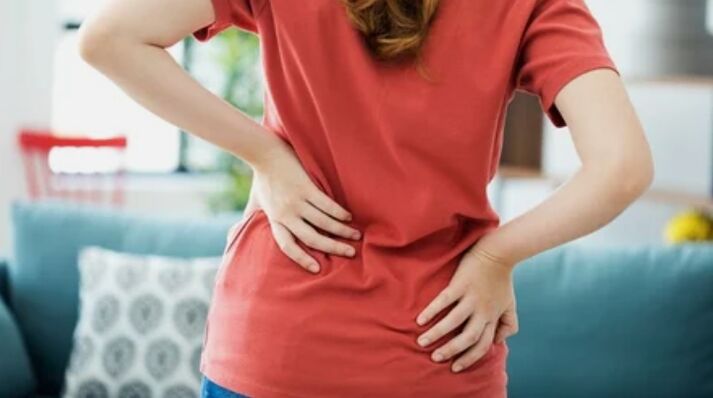
Spine
The cause of back pain along the spine may be the following conditions:
- Lumbalgia.It manifests itself sharply after lifting weights.
- Stope, scoliosis or kyphosis cause uncomfortable sensations that are manifested by pulling or pain in BS.
- The lingering convexity between the vertebrae leads to compression of the roots of the nerves, which is why a burning sensation appears on the spine.In this case, there is a loss of rear sensitivity.
- Cervical and thoracic osteochondrosis leads to changes in the spinous processes of the vertebrae, which is a consequence of the constant injury to their nerve endings.This causes back pain and stiffness in movement.
- Injuries cause acute and acute pain syndrome.In the case of damage to the spinal cord, sensitivity in the lower limbs occurs.
- Arthritis is characterized by a gradual increase in discomfort, by the onset of crunching and clicking in the vertebrae.
- Endometriosis and adnexitis cause a feeling of discomfort in the spine due to the anatomical arrangement of female reproductive organs (at the lower abdomen).
Below the lower back
The Lumbosacral department most often experiences the load due to improper weight lifting, prolonged walking or from a sitting position.But these situations only partially explain why the back hurts under the lower back.
The discomfort occurs at:
- pathological changes in the spine (arthrosis, osteochondrosis, convexity of hernia between the vertebrae);
- after injury to the sacrum or coccyx;
- In the event of a storage disorder (scoliosis or lordosis).
Soreness in the sacral department occurs in diseases of the genital sphere, constipation, cholecystitis or gastritis.In women, this symptom may indicate pregnancy or menopause.Sometimes he heralds the onset of the menstrual cycle.
Soreness in the back after sleep
Sometimes a person marks severe fatigue and collapse after a night's break.
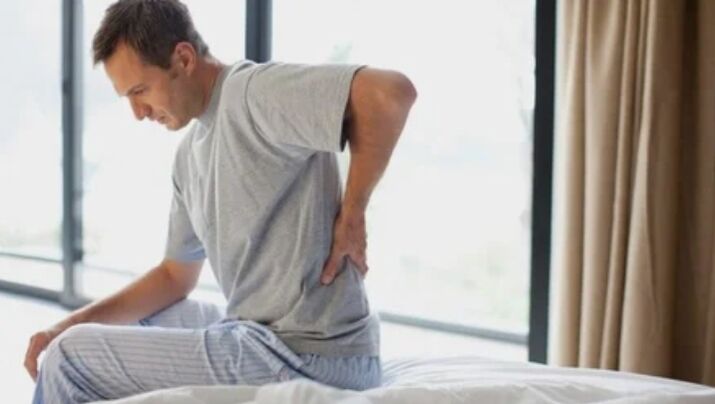
Most often the following factors contribute to this:
- incorrect port organization (too hard or soft mattress);
- increased physical activity or a large amount of work during the day;
- Destructive changes with impaired functionality of the vertebrae and discs between them;
- age -related changes in the cartilage tissue of the intervertebral discs;
- consequences of injuries;
- Inflammation in the internal organs of the abdominal cavity.
Muscle soreness
Pathological processes in the vertebrae and intervertebral discs change the structure of bones and cartilage.Therefore, there is an overvoltage of the muscles and the fascia of the tendons.This leads to the fact that the body responds with the appearance of BS.
In some cases, it is noted that the back hurts after a long stay of the draft or during hypothermia.These two factors contribute to the manifestation of myositis, in which the pain is localized in the superficial muscles.A distinctive feature of it is an increase in palpation discomfort, or when the patient tries to turn or tilt with the body.Sometimes his symptoms appear after sprains and bruises.
Painful syndrome in muscle groups often occurs due to intense training among athletes.In this case, overloaded muscle fibers lose their elasticity, seals that are found on palpation.
The causes of the disease
Rear pain is diagnosed with various diseases.
These include:
- pathological processes in the spine (hernia, spondylitis, arthralgia, radiculitis);
- Myocardial infarction, aortic aneurysm;
- diseases of the stomach and intestines (pancreatitis, colitis);
- The formation of calculas in the kidneys, cholecystitis, liver colic.
At the same time, all diseases have different etiology, which is taken into account when choosing a treatment tactics.
Degenerative pathologies
Degenerative changes occur in cartilage and bone tissue.Disruption of the morphological structure causes dystrophy, which is why osteochondrosis, spondylosis or spondil arthrosis occurs.
Among the provocative factors of destructive changes, they distinguish:
- impaired metabolism that causes insufficient nutrient intake for intervertebral discs;
- limited intake of useful traces of elements in the body;
- Large loads and injuries;
- Endocrine system malfunctions;
- Bad habits, such as smoking and excessive dependence on alcoholic beverages;
- Hypodynamia and a sedentary lifestyle.
Inflammation
Diseases leading to inflammation in the spine can occur both independently and are the result of complications of pathology.They are rarely recorded but pose a serious threat to the patient's health.
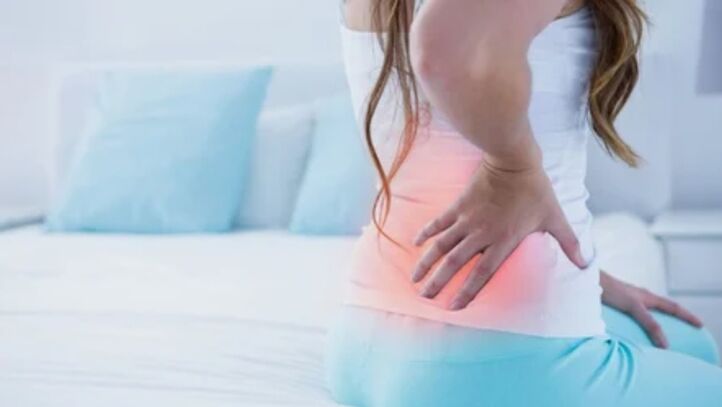
The focus of inflammation can be located in different parts of the vertebrae:
- Spondylitis, dicite or spondylodiscitis are most commonly diagnosed in the anterior section;
- Localization at the back provokes the development of osteomyelitis, spondylitis or paravertebral abscess;
- If the spinal canal is infected, then inflammation is manifested by the development of an abscess or epidur.
In addition, spinal tissues can be affected due to tuberculosis, brucellosis, trichinosis (a variety of helminthiasis).
This type of pathology is characterized by acute attacks of pain in muscle groups that are difficult to eliminate analgesics.The clinical picture can be supplemented by related symptoms, for example, with a spasmodic increase in body temperature and loss of sensitivity in certain areas of the spine.
Myofasal syndrome
Myofascial syndrome has a chronic course with the formation of seals in muscle tissue in the form of pain (trigger) points.This not only causes severe discomfort, but also leads to a decrease in motor activity, resulting in the patient quickly tired even by minor physical activity.
The likelihood of developing myofascial syndrome is increased many times in the following situations:
- osteochondrosis, spondylartrosis, injuries and bruises;
- In the case of diagnosis of scoliosis or with flat feet;
- If the work is related to the repetition of stereotypical movements;
- In the event of a disorder of the psychomational condition (if this happens with increased muscle stress).
Important in clinical practice is given to the condition of the trigger points.They are active or latent.
Given this, they are classified as follows:
- A sharp shape.The trigger points are in an active state and cause a feeling of discomfort when trying to make some movement.
- Subakut.Negative manifestations disappear at rest.
- Chronic.The latent state causes only minor discomfort in the area.
In addition, in order to perform the right choice of therapy, a classification in neurology is accepted according to the etiological principle:
- Primary trigger points are formed due to muscle damage;
- The secondary is recorded in violation of the functionality of the joints and somatic organs.
Physiological reasons
A different group of physiological causes of causing soreness in the muscle corset is called domestic.They do not require treatment and pass on their own after a small break.
These include:
- performing hard physical work for a long time;
- Weight loss or fatigue of the body;
- improperly selected posture for night rest or monotonous actions at work;
- Bad organization of a night's sleeping spot;
- Poorly selected mattress or pillow.
To determine the cause of back pain, you should consult a doctor as this may require a number of diagnostic measures.This will determine the tactics of the treatment process, which will not allow the transition of the disease to a neglected form.






















